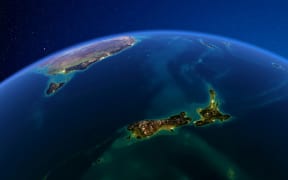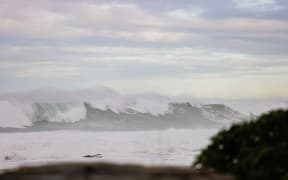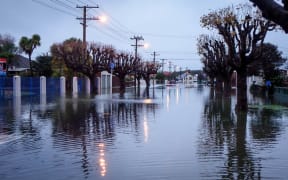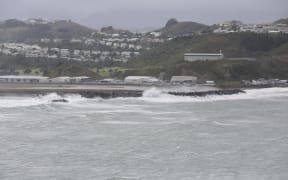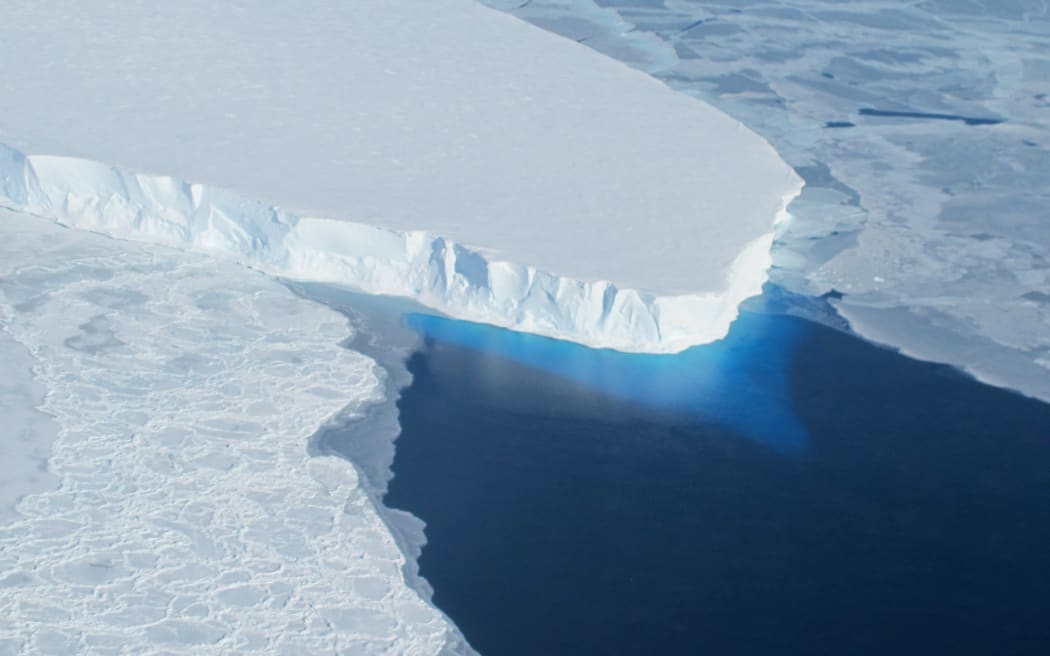
This undated photo courtesy of NASA shows Thwaites Glacier in Western Antarctica (file photo). Photo: AFP PHOTO / NASA / HANDOUT
New research from Victoria University in Wellington suggests even building a giant wall in the sea would not be enough to stop sea level rise stemming from two crucial Antarctic glaciers.
Pine Island and Thwaites are retreating and thinning faster than falling snow can rebuild them.
If they collapse, it could eventually reshape the world's coasts by unleashing around three metres of sea level rise from the West Antarctic ice sheet.
Saving these glaciers is considered so critical, scientists are working on designing a 'curtain' more than 100 metres high attached to the seabed, to protect them from warmer water which is now reaching the area because of climate change.
But a New Zealand study out today suggests even radical measures might not restore the glaciers to health once they shrink.
Alanna Alevropoulos-Borrill ran almost 200 simulations on a state-of-the-art ice sheet model, to figure out if slowing the melting might let the glaciers rebuild.
The outlook, she said, was "gloomy".
Ideas like building a giant wall or curtain, known as geoengineering, are deeply controversial for the cost, uncertainty and risk of unintended consequences.
Her study found even if a drastic intervention blocked warm water from reaching the glaciers and slowed their retreat, centuries of snowfall would be needed to rebuild them to their current thickness.
Professor Nicholas Golledge, who was also involved in the study, said it showed the dangers of relying on geoengineering rather than stopping emissions.
"My concern with the geo-engineering approach, in any field, not just in Antarctic ice sheets, is that it sort of offers a fantastic idea that we can just turn the switch off and stop these changes from happening and that sort of gives people a license to just keep emitting," he said.
Thwaites glacier alone is around the size of Great Britain. The researchers testing the idea of a curtain have been clear they do not know if the plan would work, and say it could cost US$50-100 billion, excluding maintenance. They say it could be worth it, given the eye-watering cost of sea level rise.
However, Golledge said there were other, major sources of sea level rise aside from these glaciers - and the only sure way to slow it, was by cutting greenhouse gas emissions.
If Thwaites collapses, research suggests it would destabilise the whole West Antarctic Ice Sheet.
In the natural course of events, compressed snow and ice slowly flows in the glaciers to the ocean, where it melts into the sea.
But, now, warm meltwater is flowing down, between the glacier and the bedrock it sits on, hastening the melting process by 'floating' what used to be grounded ice, Alevropoulos-Borrill said.
Because the ice is melting from land, it raises sea levels. (By contrast, melting sea ice is already sitting in the ocean, displacing water, before it melts.)
Many scientists globally are trying to pinpoint how many degrees of heating it will take to 'flip' the melting into irreversible territory.
Some studies suggest that point has passed.
But Golledge said other research suggested Thwaites was still "hanging in there".
The latest study suggested once these glaciers retreat, there was no easy way to get their current health and size back, even using extreme measures.
